
Hola #Hivers!!!
Tal vez ya vieron la publicación de @Gornat sobre el desierto 🌵, pero si no la han visto se pueden enterar aquí. Sé que el título de este post parece sensacionalista, y durante esos 15 días estuvimos pensando mucho en lo que no cuentan los documentales de Discovery sobre supervivencia, y lo fácil que parecen ciertas cosas en TV. Pero la idea es contarles nuestras experiencias para sobrevivir mientras hacemos el trabajo que debemos hacer para cumplir los requisitos de la beca de doctorado. Empecemos!!
🏜 El Valle de Tehuacán 🏜
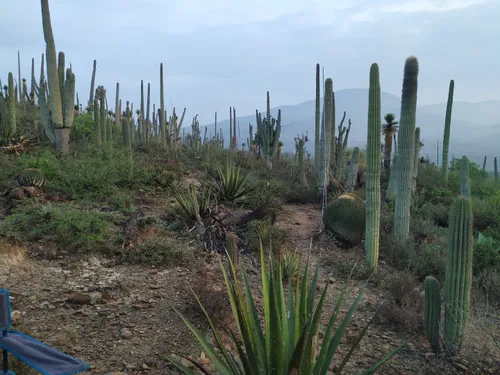
En esta ocasión nos tocó acampar por 15 días (por suerte no fueron los 21 días planificados 😅) en el semidesierto del Valle de Tehuacán. Ustedes se podrán preguntar si era un desierto o solo medio 😆, pero les explico. Esta categoría de semidesierto aplica a lugares áridos, donde el promedio de precipitaciones anuales se encuentra alrededor de 500 mm. Los cambios de temperatura 🌡 son extremos entre el día y la noche. Entonces no es un DESIERTO propiamente dicho, pero comparte varias características, solo que llueve un poquito más en unos pocos meses del año.
Si como a nosotros te gustan los cactus 🌵, entonces este es un paraíso, porque es impresionante el paisaje dominado por altos cactus columnares, pero también se pueden encontrar las biznagas, que son primas de los conocidos en Cuba como cojín de suegra.
Por cierto a estos altos cactus nos teníamos que subir usando una escalera. No tengo imágenes mientras estábamos encima, porque solo éramos dos y mientras uno subía el otro sostenía la escalera así que no hubo ánimos para fotos, espero que entiendan. La verdad es que cuando se rebasan los primeros tres metros da un poco de miedo seguir subiendo, pues las plantas ceden al peso de la persona y el viento sopla bien fuerte, así que parece que te caerás desde 10 ó 15 metros de altura.
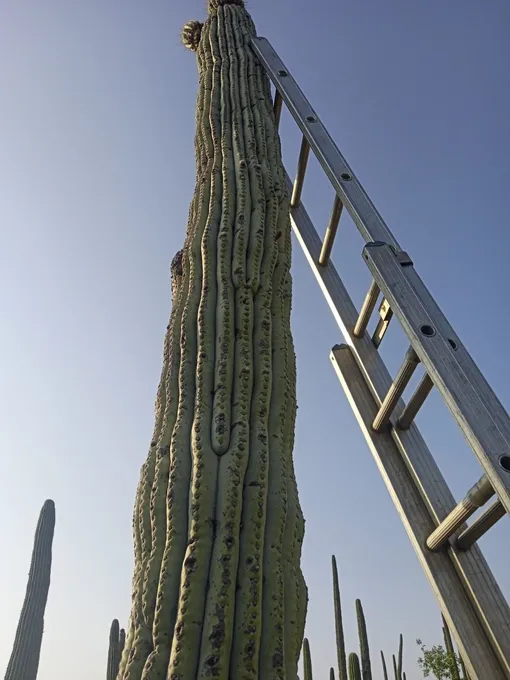
El saldo final de este maravilloso paisaje es positivo ❤️, pudimos ver los más preciosos atardeceres, aprendimos mucho sobre el clima y los ciclos diarios y pudimos literalmente tocar la biodiversidad de este sitio.

Me enamoré perdidamente de los colibríes, pues pude tener a varios en las manos.

⛺️ El campamento ⛺️
Algo muy importante cuando estás a la intemperie es el campamento, en el que se designan áreas para descansar, trabajar, cocinar y poner la basura, que debe estar fuera del alcance de animales. En esta ocasión pudimos contar con más infraestructura de la que estamos acostumbrados. Además de la tienda personal (donde dormimos), teníamos una súper tienda que usamos como bodega/oficina. Esta fue muy útil para proteger del sol y la lluvia la comida que teníamos, las herramientas y las muestras que colectamos. Además teníamos un toldo de lona que nos protegió del duro sol en las horas en que no podíamos trabajar por más que quisiéramos (🌞 de las 1100 a las 1630 horas), una mesa de trabajo y tres sillas.


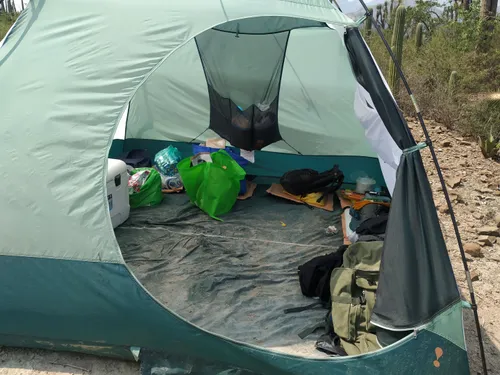
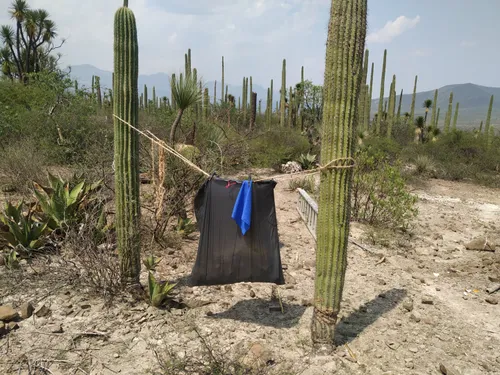
Nos debimos mudar de sitio para dormir porque trabajábamos de noche y hacía mucho frío, también llovía de noche y nos mojamos varias veces corriendo de regreso al campamento. La solución fue cambiar nuestra tienda cerca del sitio en que trabajamos. Pero esa noche Tláloc (Dios Mexica de la lluvia) nos envió una lluvia bien fuerte 💦. Déjenme decirles que no importa cuánta experiencia tengan al poner una tienda de campaña, siempre chequeen que pusieron todos los vientos de seguridad, pues se les puede inundar la tienda y acabar ensopados una vez más 🤦♀.

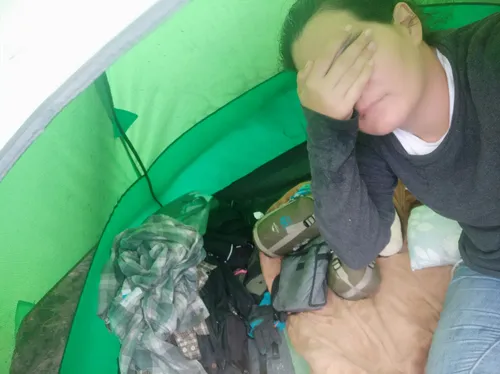
☣️ Los peligros del desierto ☣️
Al ser biólogos cubanos nos formamos muy confiados de la naturaleza, pues en Cuba (esa isla hermosa ❤️) no hay grandes carnívoros ni animales extremadamente venenosos. Así es que a veces olvidamos que en este México megadiverso hay de todo. Nos han advertido que en el valle hay pumas 🐆 y coyotes 🐕, aunque por suerte no hemos visto ninguno, pero sí constatamos que al menos un coyote se nos acercaba por las noches, pues encontramos sus heces.
También en los desiertos mexicanos hay varias especies de crotalos o serpientes de cascabel 🐍. Estas serpientes son bastante venenosas y en la primera noche encontramos una justo en el sitio en que debíamos trabajar.
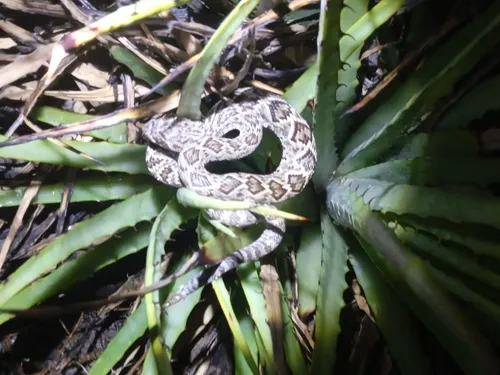
El centro de salud más cercano donde nos podían administrar un suero antiofidios estaba a 2 horas y mucho miedo de distancia 😳. Así que esa noche no trabajamos más allí, movimos el punto de muestreo y activamos las precauciones el resto de las noches.
Aunque comparado con los animales pueden parecer muy inocentes, la mayoría de las plantas están armadas en el desierto. Desde plantas urticantes que provocan fuertes alergias hasta plantas con espinas o mucrones que crecen mágica y agrupadamente en los sitios por donde hay que pasar. Sobra decir que volvimos llenos de pinchazos y arañazos que aun no se han curado.
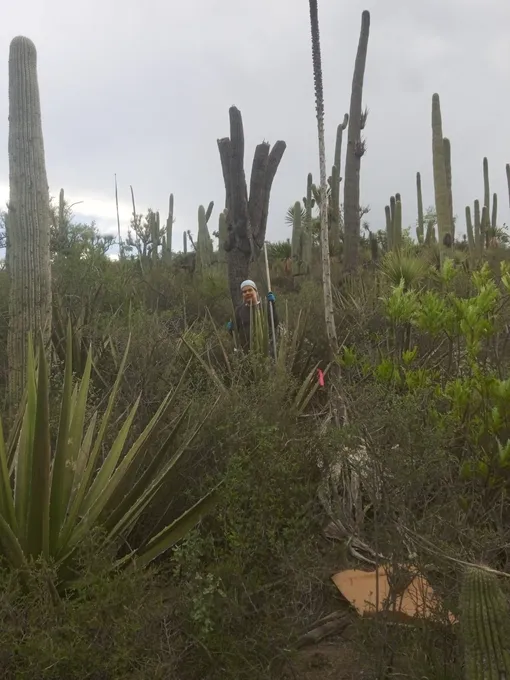
🍳 Cocinar en campaña 🍳
Los cubanos que lean esto comprenderán que todo el rato estábamos pensando en el “arroz con boniato y el café” jajajajajaj, y es que debimos ser bastante cuidadosos para no derramar nada. A los que hablen español y no sean cubanos los invito a que vean este animado, vale la pena.
Pues para resumir, les dejo las mejores imágenes de lo que pudimos cocinar y tener paciencia de hacerle fotos para ustedes 😅. La regla fue que el carbón se nos humedecía y sufrimos para prender el fuego, así que entre el trabajo y la inhabilidad de hacer fuego solo comíamos dos veces al día 😒.

En este régimen fue espectacular descubrir que teníamos papel aluminio, pues una vez que lográbamos que prendiera el carbón, dejamos que las papas se cocinaran a las brasas. Esto puede sonar gourmet pero en realidad las comíamos 6 horas mas tardes frías como hielo 😂.

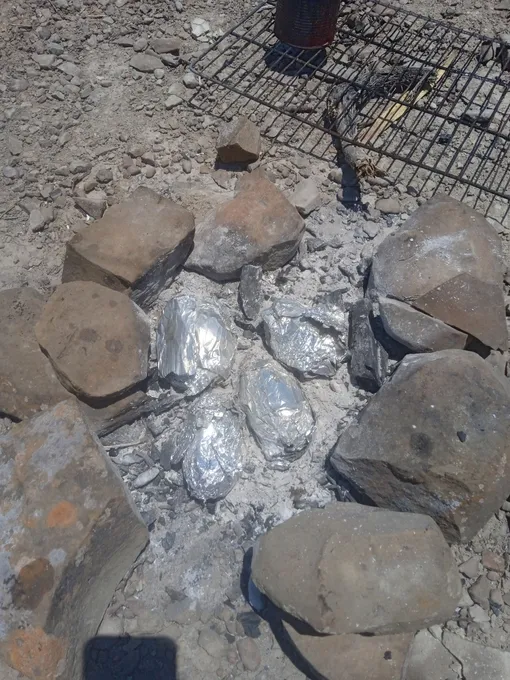
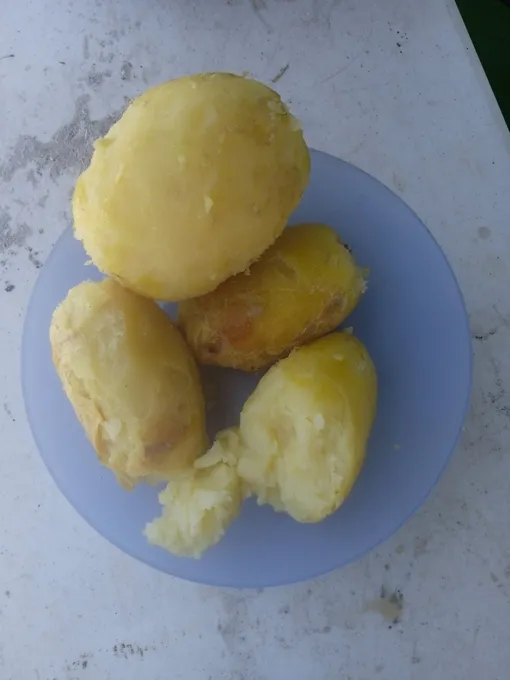
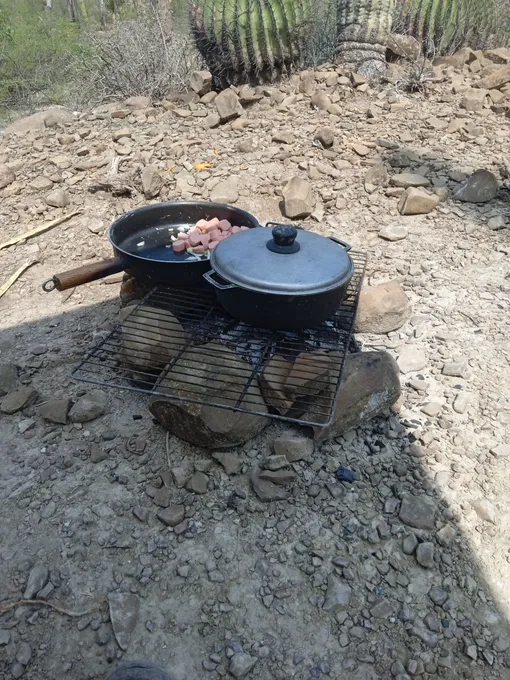
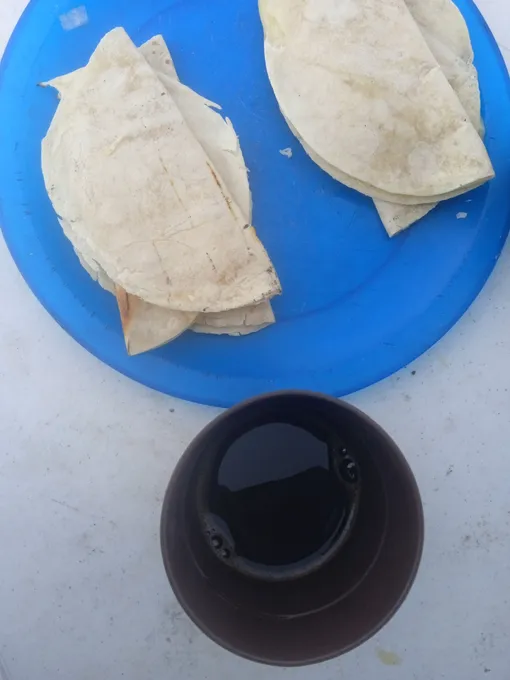


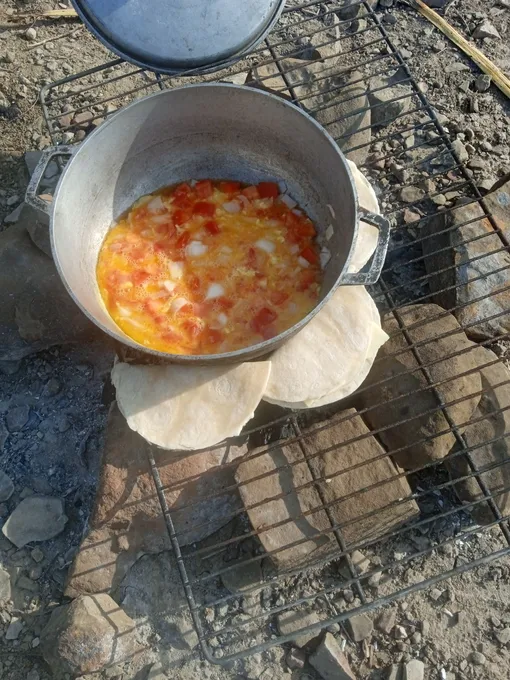
🤠 La compañía 🤠

Puede parecer trivial que les hable de esto pero les explico por qué no lo es. Si van a trabajar y a vivir en condiciones difíciles, en un clima agresivo en el que la naturaleza parece que no te quiere allí... más vale que estés con una persona con la que puedas pasarlo lo mejor posible 😎. No digo que todos los días fueron buenos y alegres, hubo mal humor (sobre todo yo mientras estaba hambrienta, con frío o sueño 😵), pero mayormente nos reímos mucho y aprendimos juntos 💪. La verdad es que si tienes un compañero de expedición por suficiente tiempo te acostumbras a trabajar con esa persona y desarrollas habilidades para ello ❤️.
Esto es todo por hoy, espero que lo hayan disfrutado y ya les contaremos otras aventuras.
Traducción con deepl
Banner con canva, diseño propio
Vídeo de youtube, perfil de Liusban Padilla


Hi #Hivers!!!
Maybe you already saw @Gornat's post about the desert 🌵, but if you haven't seen it you can find out here. I know the title of this post seems to be sensationalist, and during those 15 days we were thinking a lot about what Discovery documentaries about survival don't tell, and how easy certain things seem on TV. But the idea is to tell you about our experiences to survive while doing the work we have to do to fulfill the requirements for the PhD fellowship. Let's get started!!!
🏜 Tehuacán Valley 🏜

This time we had to camp for 15 days (luckily it wasn't the planned 21 days 😅) in the semi-desert of the Tehuacán Valley. You may wonder if it was a desert or only half 😆, but I'll explain. This semi-desert category applies to arid places, where the average annual rainfall is around 500 mm. Temperature changes 🌡 are extreme between day and night. So it is not a DESERT per se, but it shares several characteristics, it just rains a little bit more in a few months of the year.
If like us, you love cacti 🌵, then this is a paradise, because it is impressive landscape dominated by tall columnar cacti, but you can also find the biznagas, which are cousins of those known in Cuba as mother-in-law cushion.
By the way, we had to climb to these tall cacti using a ladder. I have no pictures while we were on top, because there were only two of us and while one was climbing the other was holding the ladder so there was no mood for pictures, I hope you understand. The truth is that when you pass the first three meters it is a little scary to continue climbing, because the plants bend to the weight of the person and the wind blows very strong, so it seems that you will fall from 10 or 15 meters high.

The final balance of this wonderful landscape is positive ❤️, we were able to see the most beautiful sunsets, we learned a lot about the climate and daily cycles and we could literally touch the biodiversity of this site.

I fell madly in love with hummingbirds, as I was able to hold several in my hands.

⛺️ The camp ⛺️
Something very important when you are outdoors is the camp, where areas are designated to rest, work, cook and put the garbage, which must be out of the reach of animals. This time we were able to have more facilities than we are used to. In addition to the personal tent (where we slept), we had a super tent that we used as a storage/office. This was very useful to protect from the sun and rain the food we had, the tools and the samples we collected. We also had a canvas awning that protected us from the harsh sun during the hours when we could not work no matter how much we wanted to (🌞 from 1100 to 1630 hours), a work table and three chairs.




We had to move our sleeping quarters because we were working at night and it was very cold, it also rained at night and we got wet several times running back to camp. The solution was to move our tent close to where we worked. But that night Tláloc (Mexica God of rain) sent us a very heavy rain 💦. Let me tell you that no matter how much experience you have when setting up a tent, always check that you put all the safety straps on, because you can get flooded and end up soaking wet once again 🤦♀.


☣️ Dangers of the desert ☣️
As cuban biologists, we are very confident about nature, because in Cuba (that beautiful island ❤️) there are no large carnivores or extremely toxic animals. So sometimes we forget that in this mega-diverse Mexico there is everything. We have been warned that in the valley there are pumas 🐆 and coyotes 🐕, although luckily we have not seen any, but we did notice that at least one coyote approached us at night, as we found its feces.
Also in the Mexican deserts there are several species of crotalos or rattlesnakes 🐍. These snakes are quite venomous and on the first night we found one right where we were supposed to work.

The nearest health center where we could be given an anti-ophidian serum was 2 hours and a lot of fear away 😳. So that night we didn't work there anymore, moved the sampling point and activated precautions the rest of the nights.
Although compared to animals they may seem very innocent, most of the plants are armed in the desert. From stinging plants that provoke strong allergies to plants with thorns or mucron that grow magically and clustered in places where you have to pass through. Needless to say, we returned full of punctures and scratches that have not yet healed.

🍳 Outdoors cooking 🍳
We were remembering a Cuban animated film that highlights in a very funny way the care we must take when cooking in the countryside to avoid spilling food or having accidents. Unfortunately it is only available in Spanish as far as I know, but if you get bored you can watch this short film.
Well, to sum up, I leave you the best pictures of what we were able to cook and have patience to take pictures for you 😅. The rule was that the charcoal got wet and we struggled to light the fire, so between work and the inability to make fire we only ate twice a day 😒.

In this regimen it was spectacular to discover that we had aluminum foil, because once we got the charcoal going, we let the potatoes cook in the coals. This may sound gourmet but we actually ate them 6 hours later ice cold 😂.








🤠 Desert-mate 🤠

It may seem silly for me to talk to you about this but I'll explain why it's not. If you are going to work and live in difficult conditions, in an aggressive climate where nature doesn't seem to want you there... you better be with a person you can have the best time with 😎. I'm not saying that every day was good and joyful, there were bad moods (especially me while hungry, cold or sleepy 😵), but mostly we laughed a lot and learned together 💪. The truth is that if you have an expedition partner for long enough you get used to work with that person and develop skills for it ❤️.
That's all for today, I hope you enjoyed it and we'll tell you about other adventures.
Traducción con deepl
Banner with canva, own design
Video from youtube, Liusban Padilla profile